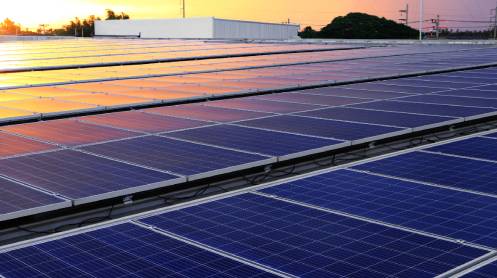In an amazing advancement for photovoltaic technology, Chinese researchers have developed a way to grow four-terminal (4T) perovskite-CIGS tandem solar cells with a world-record 29.36% efficiency. This achievement not only establishes a new benchmark in the world of solar energy conversion but also showcases the evolution of perovskite, a material with little efficiency, to one complete with potential.
Revolutionizing solar energy: How perovskite went from “impossible” to essential
Discovered in the 19th century, perovskite has long puzzled scientists by its unusual crystal structure. But, back in the early days of photovoltaic (just like the first photovoltaic leaf created in history) research, perovskite solar cells showed poor efficiency and much poorer stability, meaning they were never viable for commercial application.
It was considered by many researchers an “impossible material” because it easily degraded in environmental conditions such as heat as well as moisture. These challenges, however, have not stopped scientists from searching for ways to make perovskite more stable and efficient.
Advancements in material engineering have made perovskite one of the most promising materials used in solar cells. The perovskite-silicon tandem cells can achieve 40% efficiency, and standalone perovskite cells are still breaking new ground. The impressive performance of the 4T perovskite-CIGS tandem solar cell proves that perovskite is no longer an ideal material but a leading material for the future of renewable energy.
Perovskite-CIGS tandem solar cell harnesses more sunlight
Scientists at Northwest Normal University created a new tandem solar cell, which has a combination of a perovskite-based top cell joined with a copper-indium-gallium-selenide (CIGS) bottom cell. This composite structure helps the cell harvest a wider range of sunlight, improving its overall efficiency. The perovskite layer is semi-translucent, which allows some light to hit the CIGS bottom layer.
This multi-layered approach allows the tandem cell to effectively harness different wavelengths of sunlight. While the perovskite top cell absorbs high-energy photons, the bottom cell uses low-energy photons, which optimizes energy conversion.
Using stepwise, the researchers applied a solvent-annealing method of dimethyl sulfoxide (DMSO) onto the perovskite layer to enhance its quality. It also heated the material twice, first at 100°C, then at 80°C, to help the crystal grow.
The result was a perovskite film of high purity with improved crystallinity and larger film grain sizes without lead iodide contamination above the detection limit. The improved semiconductor enabled them to attain a semi-transparent perovskite top cell efficiency of 21.26%, with a bifaciality factor of 92.2%. In addition to the CIGS bottom cell, the tandem structure achieved an overall efficiency of 29.36%, leading the 4T perovskite-CIGS solar cells.
Perovskite-CIGS tandem cells: Making solar energy more reliable and affordable
This is a very important development for the future of solar power. The enhanced efficiency of perovskite-CIGS tandem cells allows solar panels to generate more energy, occupying less space. This would be the basis of smaller, lighter, and cheaper solar panels, which would make renewable energy more accessible to households and businesses around the world. This, in addition to the solvent-annealing method, excludes one of the biggest drawbacks of the perovskite solar cells: their stability.
A major issue with perovskite technology has been its fast degradation. By improving the material’s crystallinity as well as removing impurities, researchers have made an important stride toward improving the durability and commercial potential of perovskite-based solar cells.
This new solar cell is vital in helping accelerate this transition as governments as well as industries globally, search for clean, effective energy solutions. If this technology advances further, it might even take over the photovoltaic market, decreasing dependence on typical silicon-based sunlight panels as well as reducing the expense of sunlight energy.
An efficiency of 29.36% for the new 4T perovskite-CIGS tandem solar cell represents a significant breakthrough in solar technology. Once thought to be an “impossible material,” perovskite is changing renewable energy (just like this photovoltaic ceramic, which is 1000 times more powerful).






